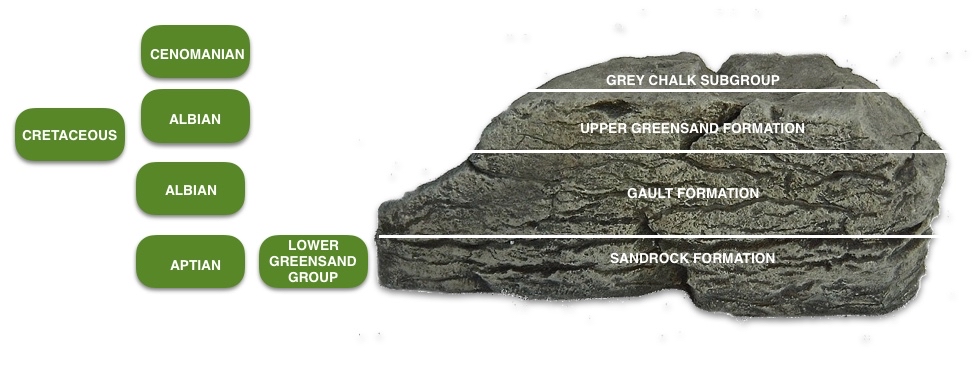In a peaceful corner of the Isle of Wight, Rocken End is a less visited location with a small inland quarry. It is ideal for anyone interested in ammonites and other molluscs, and also makes for an excellent day out for all the family.
DIRECTIONS
♦ To reach Rocken End (or St Catherine’s point), it is best to park in the car park at the western end of Sandrock Road, west of Niton. The road is too narrow for coaches
♦ From here, a 3km walk will take you to Rocken End and the small quarry.
♦ Ref: 50.58051°N, 1.30420°W
PROFILE INFO
FIND FREQUENCY: ♦♦♦ – There is a moderate chance of finding fossils here.
CHILDREN: ♦♦ – Rocken End is suitable for families and there are lots of places to go for walks.
ACCESS: ♦♦♦ – Access is quite easy, with a car park, cafe and toilets.
TYPE: – You can find fossils at this location on the foreshore, in the cliff face and at the small quarry.
FOSSIL HUNTING
Blocks of Upper Greensand can be found on the foreshore along with Glauconitic Marl. Within this bed, phosphatic nodules can contain fossils of ammonites (Hypoturrilites, Schloenbachia and Idiohamites), along with bivalves, gastropods and brachiopods. Fossils at Rocken End can be found either on the foreshore or in the small quarry. Most of the ammonites here can only be found in nodules.
GEOLOGY
Rocken End is a promontory almost at the southern end of the Isle of Wight. It is less than a kilometre from St. Catherine’s Lighthouse at St. Catherine’s Point, the southernmost part of the island.
Rocken End is composed of fallen debris from landslides. Beneath the debris, Gault Clay lies above Sandrock Formation of the Lower Greensand Group. The geology at Rocken End consists of (in ascending order):
- Lower Greensand Group (Sandrock Formation)
- Gault Formation ,
- Upper Greensand Formation and
- Cenomanian-aged Chalk from the Grey Chalk Subgroup (West Melbury Marly Chalk Formation).
The Upper Greensand can be seen in slippages with steep landward dips. Blocks of this can also be found on the foreshore, along with Glauconitic Marl.
The Gault Clay here is unfossiliferous and the Lower Chalk is not particularly well exposed. Therefore, collecting at Rocken End is done mostly within the fallen blocks of the Upper Greensand.


SAFETY
Common sense when collecting at all locations should be used and knowledge of tide times is essential. If you are examining the foreshore, be careful of tide times, as the sea reaches the foot of the cliff most of the year.
Beware of walking too close to the cliff face, as the footpath runs alongside the steep face. When in the small quarry, be careful of falling rocks.
EQUIPMENT
You will need a hammer, safety glasses and chisels for this location, although fossils can also be picked up from the foreshore.
ACCESS RIGHTS
This site is a site of special scientific interest (SSSI). This means you can visit the site, but hammering the bedrock is not permitted. For full information about the reasons for the status of the site and restrictions, download the PDF from Natural England.
It is important to follow our ‘Code of Conduct’ when collecting fossils or visiting any site. Please also read our ‘Terms and Conditions‘
LINKS
♦ Buy Fossils, Crystals, Tools
♦ Location Discussions
♦ Deposits Magazine
♦ Join Fossil Hunts
♦ UK Fossils Network





















